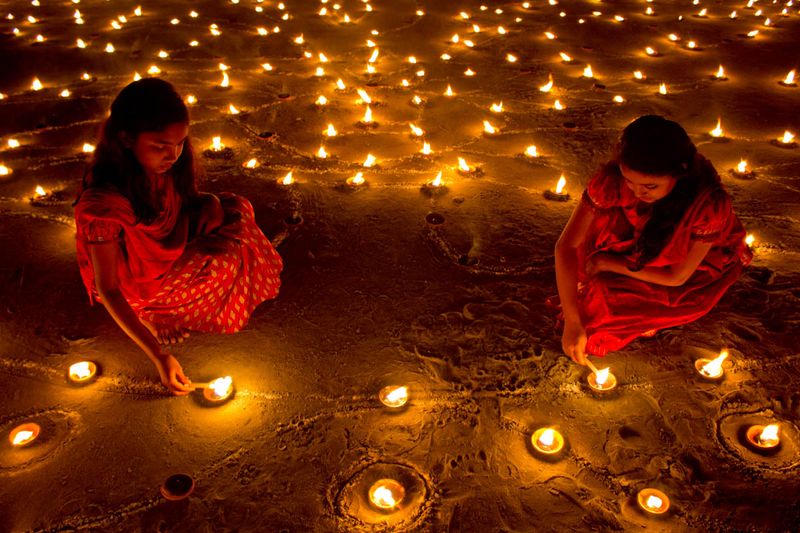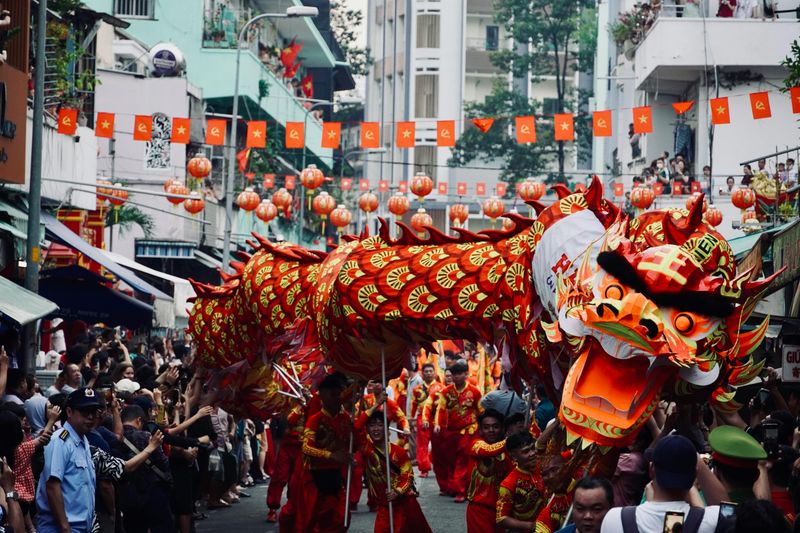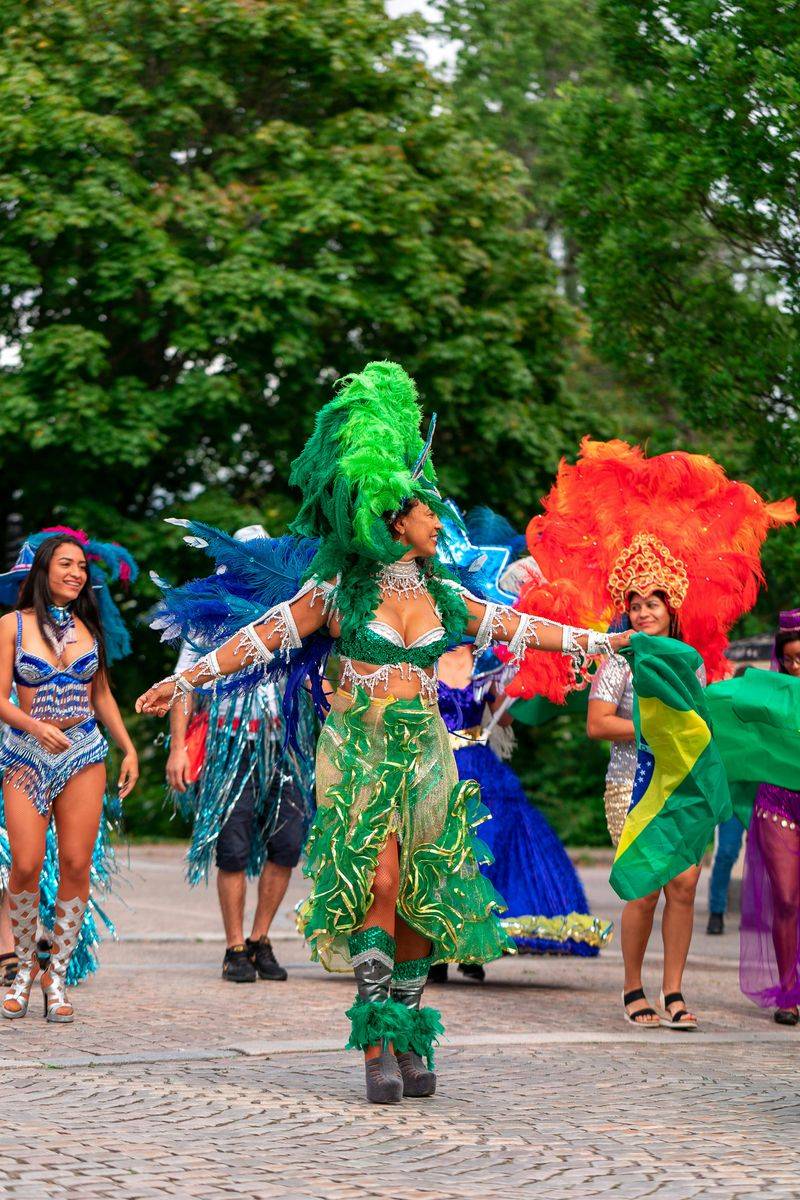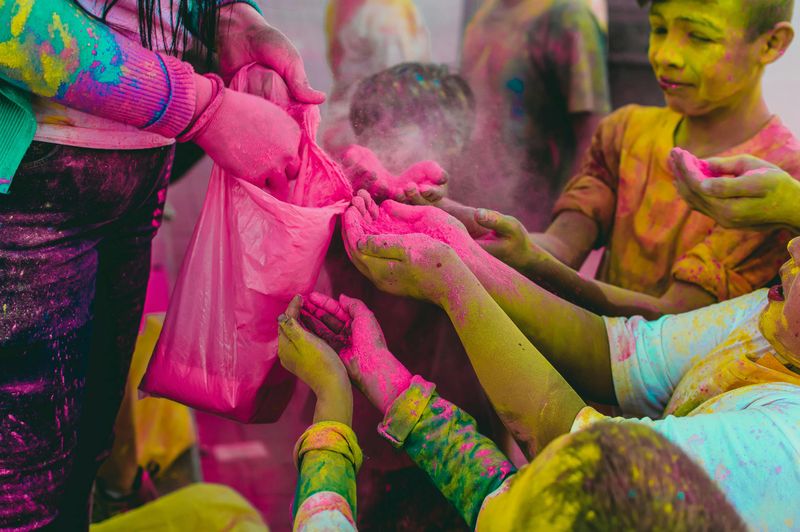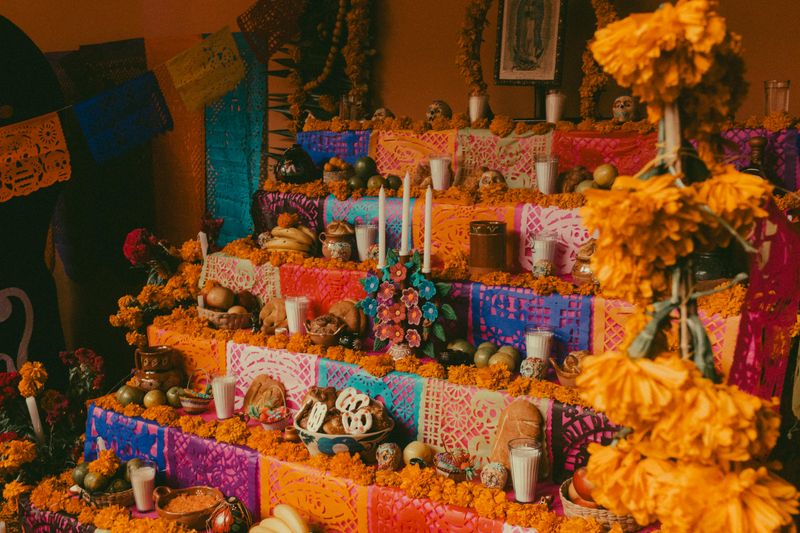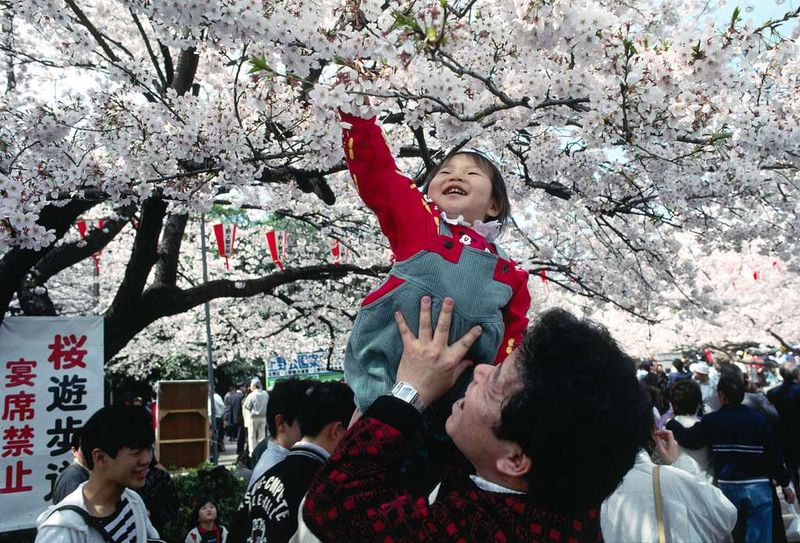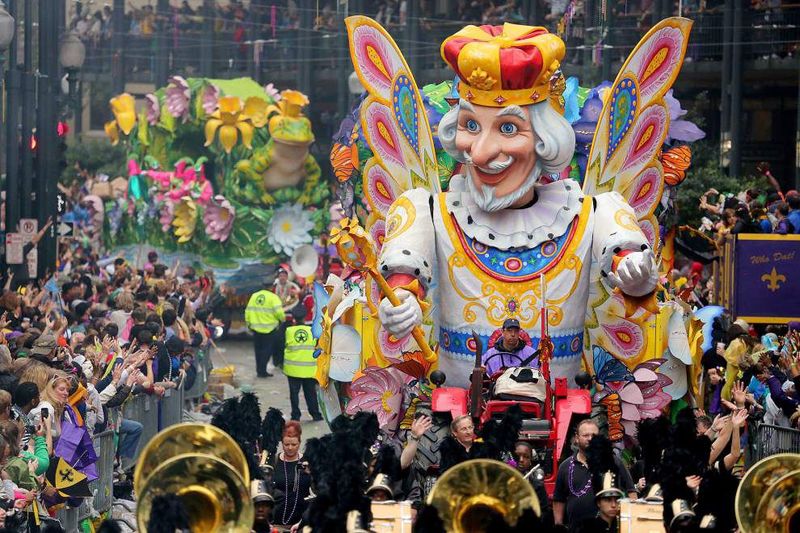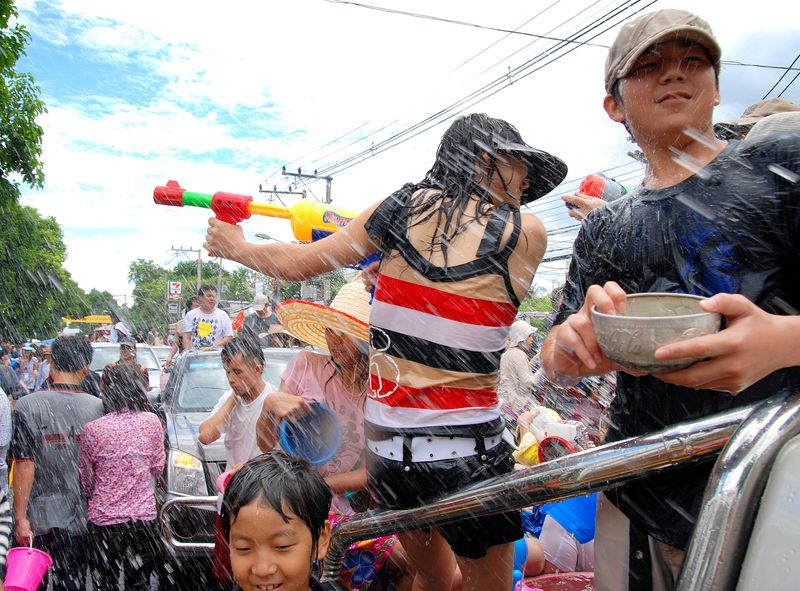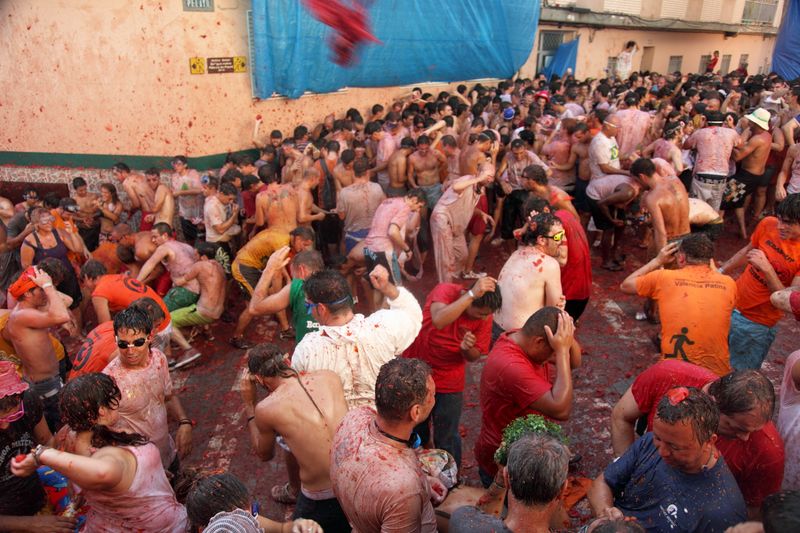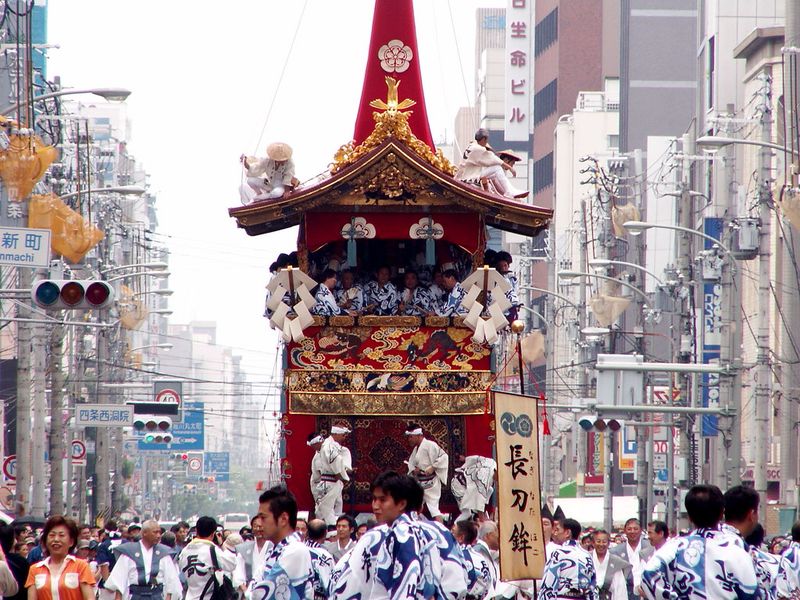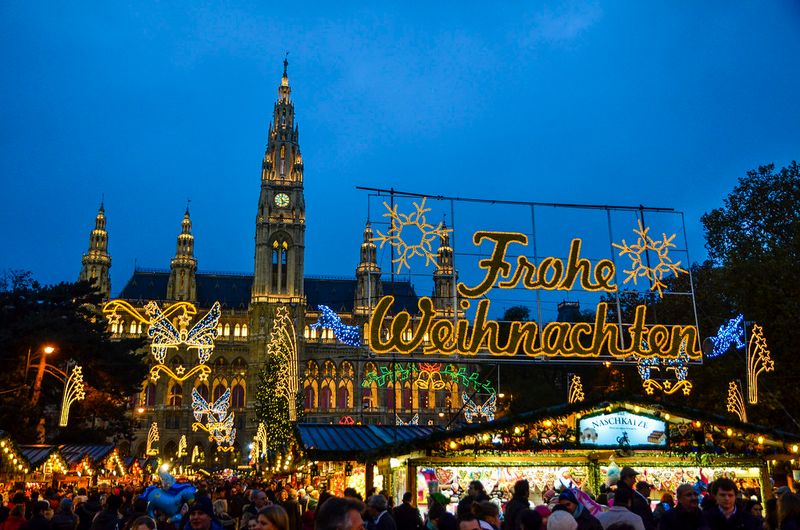Traveling with family creates memories that last a lifetime, especially when you experience the world’s most vibrant cultural celebrations. From colorful powder fights to tomato-throwing battles, these festivals showcase humanity’s incredible diversity and our universal love of celebration. Pack your bags and mark your calendars – these 13 festivals offer families a front-row seat to authentic traditions, delicious foods, and spectacular displays that will leave everyone wide-eyed with wonder.
1. Diwali – India’s Festival of Lights
Imagine an entire country aglow with millions of oil lamps, colorful rangoli designs decorating doorsteps, and the night sky erupting with fireworks. That’s Diwali in India! This five-day celebration honors the triumph of light over darkness.
Families can join locals in lighting diyas (clay lamps), exchanging gifts, and sampling mouth-watering sweets like jalebi and ladoo. Kids especially love creating their own rangoli art with colored powder and rice.
The festival typically falls between October and November. Many cities host special family-friendly events where visitors can learn to make traditional crafts and participate in cultural performances that bring ancient stories to life.
2. Chinese New Year – A Dragon-Filled Spectacle
Red lanterns sway overhead while dragon dancers weave through crowded streets during this 15-day celebration marking the lunar new year. Children receive lucky red envelopes filled with money and families gather for reunion dinners featuring dumplings and whole fish – symbols of prosperity.
The festivities reach their peak with massive parades where elaborate dragon and lion costumes dance to the rhythm of drums and cymbals. Firecrackers pop throughout neighborhoods, traditionally meant to scare away evil spirits.
Beyond mainland China, vibrant celebrations happen in Singapore, Taiwan, and Chinatowns worldwide. Falling between January and February, this festival offers families a chance to experience one of humanity’s oldest continuous celebrations.
3. Carnival in Rio – Brazil’s Rhythm and Color
The world’s largest party erupts each February when Rio de Janeiro transforms into a kaleidoscope of feathers, sequins, and pulsating samba rhythms. Carnival celebrates the final days before Lent with a spectacle unlike any other.
Families can watch the famous Sambadrome parade where competing samba schools present elaborate floats and hundreds of costumed dancers. Street parties called ‘blocos’ offer more family-friendly environments with music, dancing, and costume contests where everyone participates.
Many hotels organize special children’s carnival events with face painting and costume-making workshops. The infectious energy and joy of Brazilian culture shine through, creating an unforgettable experience of community celebration that bridges all age gaps.
4. Oktoberfest – Germany’s Folk Festival
Munich’s famous celebration isn’t just about beer! This 16-day folk festival dating back to 1810 offers plenty for families with carnival rides, parades, and traditional Bavarian music filling the festival grounds.
Children delight in the fairground atmosphere with its roller coasters and games while parents sample pretzels, sausages, and roasted chicken. Sundays feature special family days with reduced prices and activities designed specifically for younger visitors.
The opening parade showcases traditional costumes, horse-drawn brewery wagons, and bands playing folk music. Many beer tents welcome families during daytime hours, serving delicious food alongside non-alcoholic beverages. The festival typically runs from mid-September through early October, offering families a taste of authentic German traditions.
5. Holi – The Colorful Powder Festival
Strangers become friends instantly when everyone is covered head-to-toe in rainbow-colored powders! This ancient Hindu spring festival celebrates the victory of good over evil and the arrival of spring with what might be the world’s most joyful color fight.
Families arm themselves with bags of vibrant powders and water guns filled with colored water. No one stays clean as people playfully chase each other through streets that transform into a living canvas of color.
The night before features bonfires symbolizing the burning of evil. Celebrated primarily in India and Nepal during March, Holi has spread globally with family-friendly versions now happening in many major cities worldwide, making this unique cultural experience increasingly accessible to traveling families.
6. Día de los Muertos – Mexico’s Celebration of Life
Sugar skulls, marigold flowers, and vibrant ofrendas (altars) transform Mexico during this profound celebration honoring deceased loved ones. Far from scary, this November 1-2 holiday teaches children beautiful lessons about remembrance and family connections that transcend death.
Families can watch spectacular parades featuring elaborate skeleton costumes and visit cemeteries where graves are decorated with candles and flowers. Children particularly enjoy the artistic aspects – decorating sugar skulls, making paper marigolds, and helping prepare special foods like pan de muerto (bread of the dead).
Communities welcome respectful visitors to participate in public celebrations. The Disney film “Coco” has introduced many international families to this meaningful tradition, making it an increasingly popular cultural experience for travelers with children.
7. Cherry Blossom Festival – Japan’s Pink Wonderland
For a few magical weeks each spring, Japan transforms into a pink wonderland as cherry trees burst into delicate blooms. Hanami (flower viewing) parties fill parks nationwide as families spread blankets beneath blossoming trees for picnics and photos.
Children chase falling petals while parents snap countless pictures against nature’s perfect backdrop. Many festivals feature traditional Japanese performances, food stalls selling seasonal treats like sakura mochi, and evening illuminations that give the blossoms an ethereal glow.
The exact timing varies by region (typically March-April), with forecasts tracked intensely as the “cherry blossom front” moves northward through the country. Kyoto’s historic temples surrounded by blooming trees offer particularly stunning settings for families to experience this quintessentially Japanese celebration of nature’s fleeting beauty.
8. Mardi Gras – New Orleans’ Family-Friendly Side
Beyond the adult revelry of Bourbon Street lies the true heart of New Orleans’ Mardi Gras – a weeks-long celebration with plenty of family-friendly parades and traditions. Locals know to bring ladder seats so children can safely catch beads, stuffed animals, and other treasures tossed from elaborate floats.
Families flock to St. Charles Avenue where costumed riders on massive themed floats throw prized “throws” to eager crowds. The King Cake tradition delights children – whoever finds the tiny plastic baby hidden inside gets special privileges and responsibilities!
Visit during “Family Gras” weekend for concerts and activities designed specifically for younger visitors. The festive spirit permeates the city with street performers, music on every corner, and the chance to see centuries-old traditions like the Mardi Gras Indians with their spectacular hand-sewn costumes.
9. Songkran – Thailand’s Nationwide Water Fight
April in Thailand brings the world’s biggest water fight! Originally a respectful ritual of pouring water over Buddha statues and elders’ hands, Songkran has evolved into a joyful three-day water battle marking the Thai New Year.
Armed with water guns, buckets, and hoses, people of all ages drench each other in the streets. The water symbolizes washing away the past year’s misfortunes. Smaller children particularly enjoy the freedom to splash adults without consequences!
Chiang Mai hosts especially enthusiastic celebrations with its moat providing endless water ammunition. Many hotels organize family-friendly Songkran activities with gentler water play for younger children. Beyond the water festivities, families can observe beautiful sand pagoda building and temple visits that showcase the holiday’s spiritual roots.
10. Eid al-Fitr – A Global Feast of Generosity
After a month of fasting during Ramadan, Muslim communities worldwide erupt in celebration with this joyful three-day festival. Children receive new clothes, money gifts, and enough sweets to make any dentist nervous!
Families begin with morning prayers followed by feasting on special dishes that vary by region – from Turkey’s baklava to Indonesia’s rendang. The holiday emphasizes charity, with families delivering food to those in need and visiting relatives.
Public celebrations in multicultural cities often feature carnival rides, henna painting, and cultural performances. The date shifts annually based on the lunar calendar. For traveling families, experiencing Eid offers insight into Islam’s emphasis on community, generosity, and gratitude – universal values that transcend cultural differences and create meaningful connections.
11. La Tomatina – Spain’s Messy Tomato Battle
What child hasn’t dreamed of throwing food without getting in trouble? In the small Spanish town of Buñol, that dream comes true every August when 20,000 people gather for the world’s largest food fight!
For one gloriously messy hour, participants pelt each other with over 150,000 pounds of overripe tomatoes. The streets literally run red with tomato juice as everyone ends up looking like walking spaghetti sauce.
While the main event has age restrictions (participants must be 18+), many families with older teens participate together. The town has created a children’s version with softer tomatoes and gentler rules. After the battle, locals help visitors rinse off with hoses, and the acidity of the tomatoes leaves everyone’s skin feeling amazingly clean!
12. Gion Matsuri – Japan’s Month-Long Summer Festival
For over a thousand years, Kyoto has celebrated this July festival with massive wooden floats weighing up to 12 tons, pulled through narrow streets by teams of men in traditional clothing. Some floats rise several stories high, decorated with priceless tapestries and requiring dozens of people to navigate corners using only wooden poles and ropes.
Families love the evening yoiyama street parties where food stalls sell regional specialties and children play traditional games. Many wear yukata (summer kimonos) while enjoying shaved ice treats.
The festival originated as a purification ritual during an ancient plague. Today, it offers families a chance to experience Japan’s living history through parades, concerts, and demonstrations of traditional crafts. The neighborhood festivities create a welcoming atmosphere where visitors can interact with locals in meaningful cultural exchanges.
13. European Christmas Markets – Winter Wonderlands
Nothing captures holiday magic like the centuries-old tradition of Christmas markets scattered across Europe. Wooden stalls decorated with twinkling lights sell handcrafted ornaments, toys, and seasonal treats in town squares transformed into winter wonderlands.
Children can ride carousels, meet St. Nicholas figures (who vary by country), and warm up with hot chocolate while parents sample mulled wine. Many markets feature ice skating rinks, live nativity scenes, and workshops where families create traditional crafts together.
Germany’s markets in Nuremberg and Dresden are among the oldest and most famous, but unique versions exist across the continent. Vienna adds classical concerts while Strasbourg incorporates French culinary traditions. Running from late November through December, these markets provide families a perfect introduction to European cultural traditions in a festive, child-friendly atmosphere.

